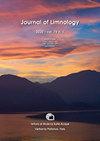乌干达淡水生态系统浮游动物、大型无脊椎动物和鱼类的初级生物多样性数据
IF 1.1
4区 环境科学与生态学
Q4 LIMNOLOGY
引用次数: 2
摘要
有效的保护需要关于生物多样性状况的可靠数据和信息。淡水生物多样性的保护落后于陆地和海洋生物多样性,因为淡水生态系统的数据和信息限制最大。鉴于淡水生态系统所居住的物种比其他生态系统多得不成比例,数据和信息的缺乏威胁到许多物种和依赖的生态系统服务。关于淡水生物多样性的数据和资料有限,主要是因为很少有淡水生态系统被考虑定期监测。然而,即使是现有的数据也是分散的,格式也不友好,限制了可访问性和使用。最好使淡水生物多样性数据和信息在任何地方都可获得,以便充分发挥其指导保护的潜力。为了增加乌干达淡水生物多样性数据的可获取性,我们提供了34个数据集,涵盖该国淡水生态系统中的三个主要淡水分类群:浮游动物、大型无脊椎动物和鱼类。数据集提供了三个主要群体的产状记录和相应的丰度数据。通过全球生物多样性信息设施(GBIF)提供的数据集涵盖了1971-2021年的较长时期,共有56104次发生记录。其中,2022年出版的记录为8674份。这些数据来自乌干达国家渔业资源研究所(NaFIRRI)的科学家进行的初级生物多样性调查。调查覆盖了该国的大部分水体。预计这些数据集将增加对淡水保护研究、决策和能力建设数据的获取。这些数据已经被用于开发保护工具和评估保护状况。本文章由计算机程序翻译,如有差异,请以英文原文为准。
Primary biodiversity data on zooplankton, macroinvertebrates, and fish from freshwater ecosystems of Uganda
Effective conservation requires reliable data and information on the status of biodiversity. The conservation of freshwater biodiversity lags behind terrestrial and marine biodiversity because data and information limitations are greatest in freshwater ecosystems. Given that freshwater ecosystems are inhabited by disproportionately more species than other ecosystems, paucity of data and information threatens many species and dependent ecosystem services. Data and information on freshwater biodiversity is limited mainly because few freshwater ecosystems are considered for regular monitoring. However, even existing data is scattered and in non-user-friendly formats, limiting accessibility and use. It is desirable to make freshwater biodiversity data and information accessible everywhere so that it attains its full potential in guiding conservation. To increase accessibility to freshwater biodiversity data in Uganda, we present 34 datasets covering three major freshwater taxa: zooplankton, macroinvertebrates, and fish within freshwater ecosystems in the country. The datasets provide occurrence records and corresponding abundance data where applicable for the three major groups. The datasets which are available through the Global Biodiversity Information Facility (GBIF) cover a long period from 1971-2021 and have a total of 56,104 occurrence records. Of these records, 8,674 records were published in 2022. The data were mobilized from primary biodiversity surveys conducted by scientists at the National Fisheries Resources Research Institute (NaFIRRI) in Uganda. The surveys covered most of the water bodies in the country. The datasets are envisaged to increase accessibility to data for freshwater conservation research, decision making and capacity building. The data has already found use in development of conservation tools and conservation status assessments.
求助全文
通过发布文献求助,成功后即可免费获取论文全文。
去求助
来源期刊

Journal of Limnology
地学-湖沼学
CiteScore
2.70
自引率
6.20%
发文量
12
审稿时长
3 months
期刊介绍:
The Journal of Limnology publishes peer-reviewed original papers, review papers and notes about all aspects of limnology. The scope of the Journal of Limnology comprises the ecology, biology, microbiology, physics, and chemistry of freshwaters, including the impact of human activities, management and conservation. Coverage includes molecular-, organism-, community-, and ecosystem-level studies on both applied and theoretical issues. Proceedings of workshops, specialized symposia, conferences, may also be accepted for publication.
 求助内容:
求助内容: 应助结果提醒方式:
应助结果提醒方式:


